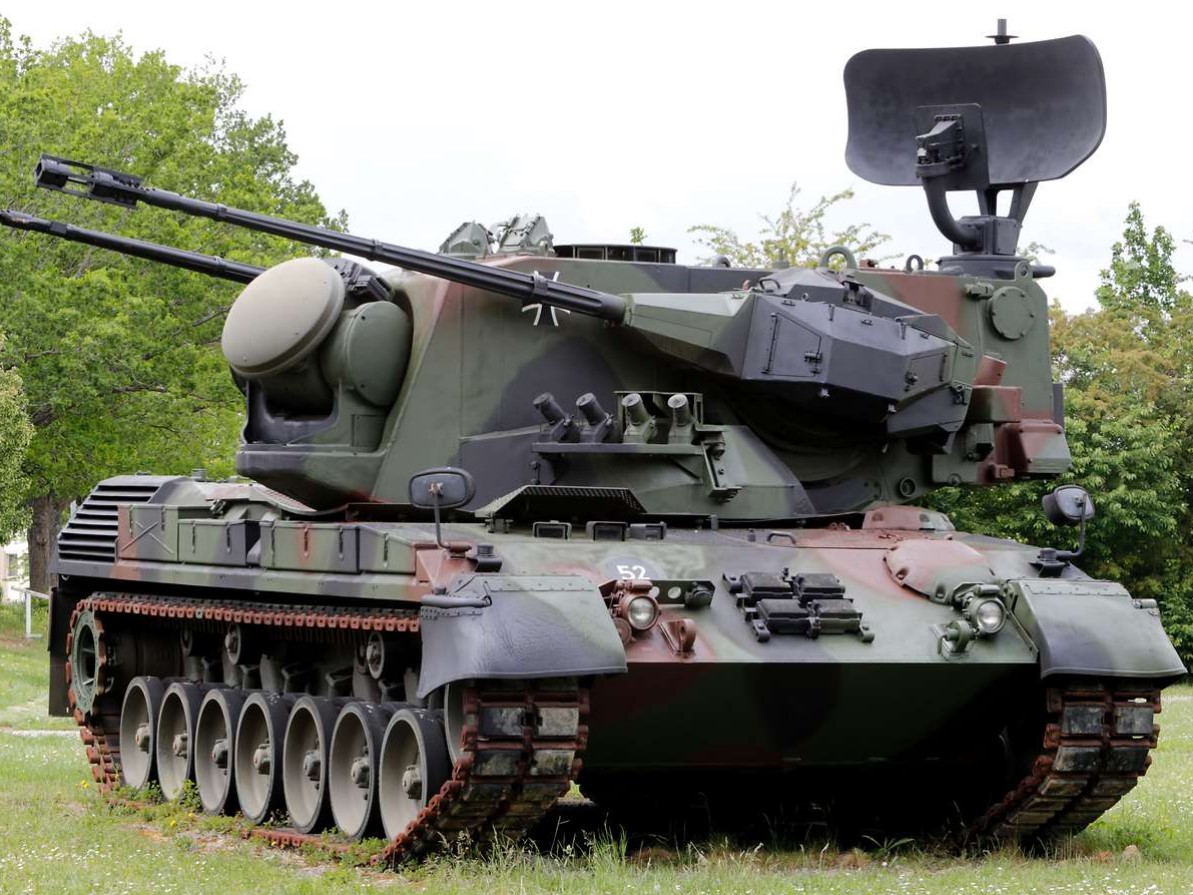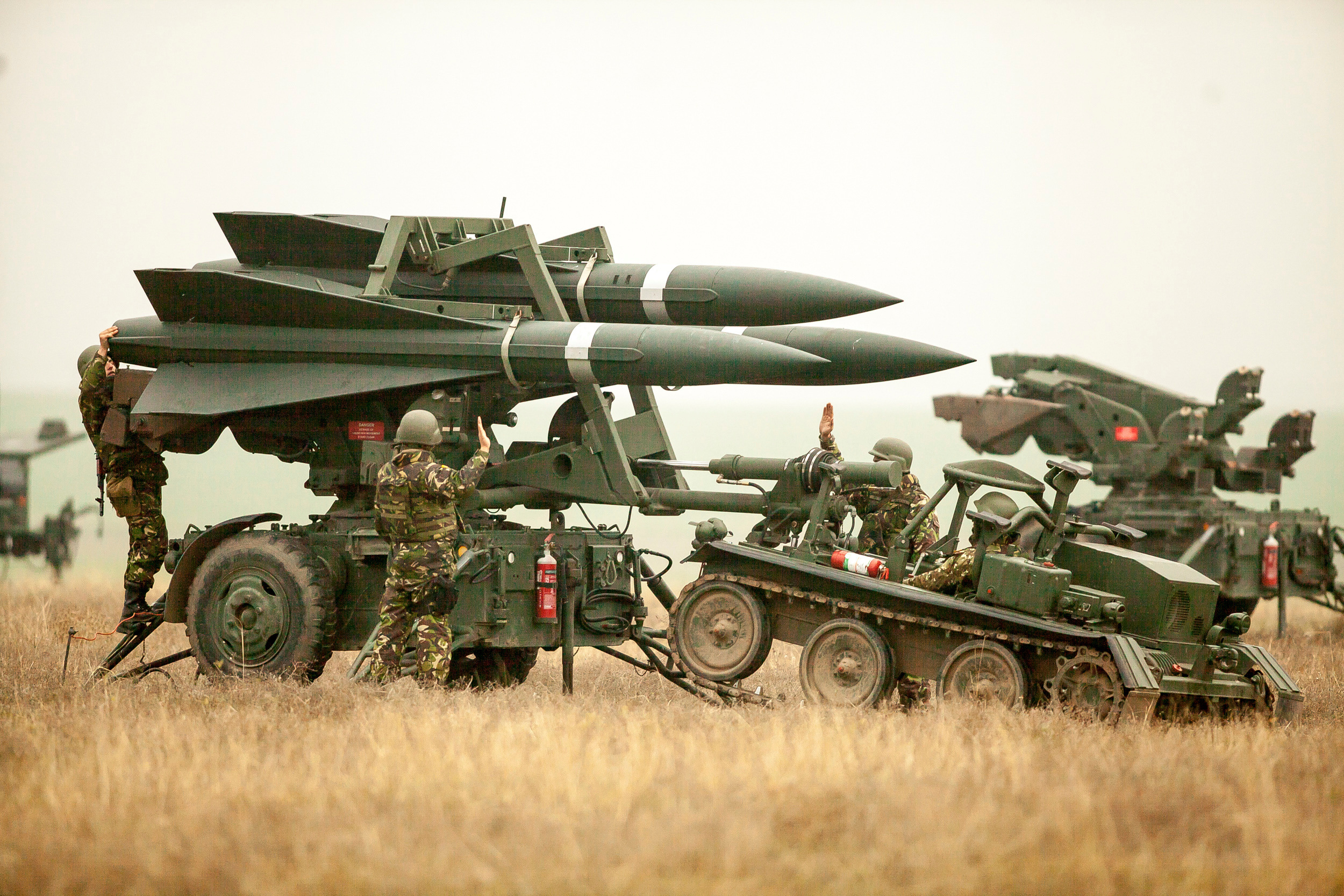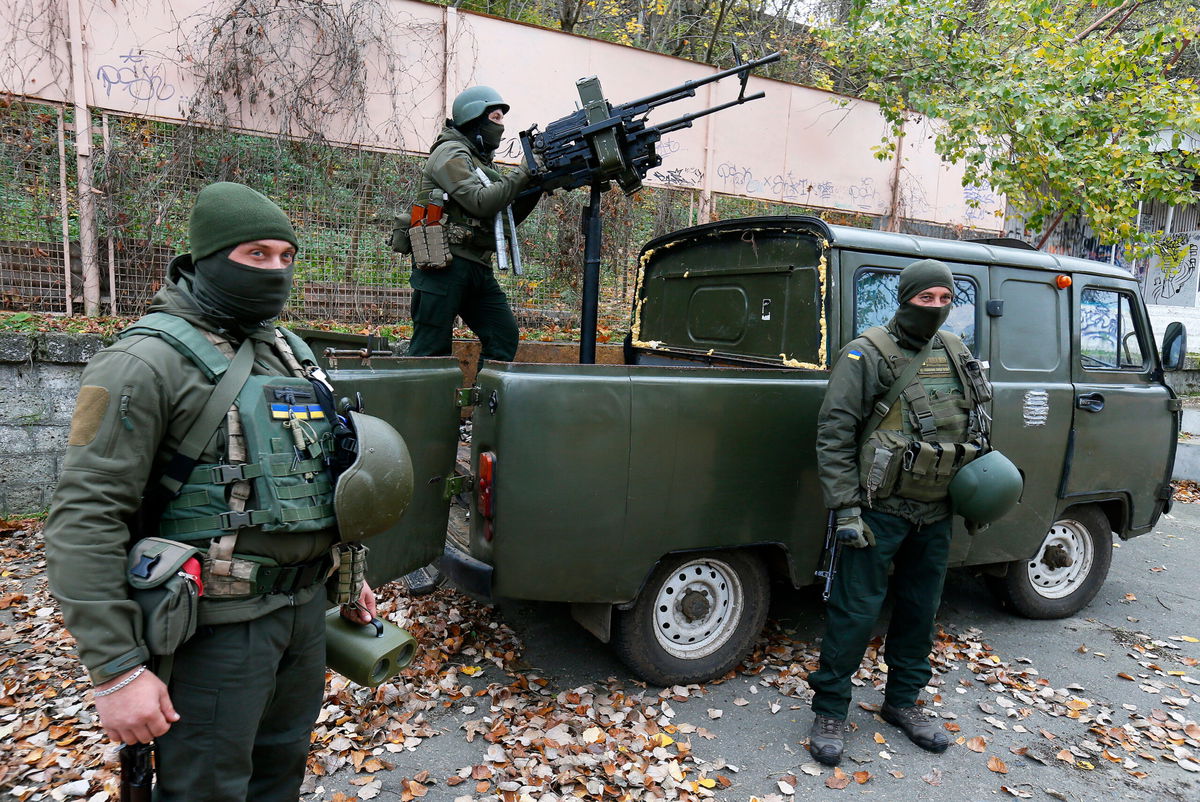Anti-Aircraft Ukraine - The SPD's federal chairwoman, Saskia Esken, had said on Monday there were no plans for Germany to deliver heavy weaponry to Ukraine, but that the government wanted to participate in a so-called Ringtausch, or multilateral exchange, instead.
The three coalition partners have requested a parliamentary motion which would give the green light to Germany to provide heavy weapons via an exchange between countries, primarily involving Eastern European states. "In spite of Russian claims that they eliminated our air defense, they still can't dominate our skies, except for some areas in eastern Ukraine," Khara explained.
Anti-Aircraft Ukraine

"Every additional SAM [surface-to-air missile] system allows us to challenge that in the east while keeping the skies over the rest of Ukraine protected." President Biden today announced an additional $800 million in security assistance to Ukraine, bringing the total U.S.
security assistance committed to Ukraine to $1 billion just last week, and a total of $2 billion since the start of the Biden Administration. The assistance will take the form of direct transfers of equipment from the Department of Defense to the Ukrainian military to help them defend their country against Russia's unprovoked and unjustified invasion. The new $800 million assistance package includes:
Meanwhile other manufacturers in the armaments industry have already applied for export permits for a variety of German-made heavy weapons systems in anticipation of an increase in the German government's willingness to act which has been influenced by a nation's deep angst over its murderous Nazi past.
Christine Lambrecht, the defense minister, pledged about the Gepard self-propelled anti-aircraft guns, in a speech to the representatives of 40 countries at high-level defense talks hosted by the US air force at its Europe headquarters in Ramstein, south-west
Germany. But the Slovakian system alone is not enough to replenish Ukraine's mauled anti-aircraft network. As Kyiv prepares to face Russian President Vladimir Putin's renewed offensive in the eastern Donbas region, Ukrainian leaders are still stressing the need to defend their airspace and the importance of Western support in doing this.

Older anti-aircraft systems, inherited by the county after the collapse of the Soviet Union, remain the backbone of its aerial defenses. The decades-old systems are very effective against the incoming Russian projectiles, Vladimir Klimin, deputy commander of a battalion working with S-300 surface-to-air missile systems in the Kiev region, told the newspaper.
Moscow has ramped up its aerial bombing campaign against Ukraine, targeting its critical infrastructure with cruise missiles and drones. The strikes came in the aftermath of the Crimean Bridge bombing, squarely blamed by Russia on Ukraine and branded a "terrorist act."
The delivery of the Gepard systems has been under discussion for weeks in Germany. The Munich-based armored vehicle manufacturer Krauss-Maffei Wegmann (KMW) announced its readiness weeks ago to revamp the Gepards. They were previously in the possession of the German army for whom KMW designed them in the 1970s.
They would, after a short period for overhaul, be ready to be delivered to Ukraine. The government decision appears to have also been an attempt to pre-empt a motion expected to be put to the parliament this week, backed by the conservative opposition, together with the Greens and the pro-business FDP both of whom are in a three-
way coalition with Scholz's Social Democrats, (SPD), which would call on the government to finally deliver heavy weaponry, including both combat and armored personnel carriers, as well as artillery, directly to Ukraine. In addition to the U.S.-produced short-range air defense systems the Ukrainians have been using to great effect, the United States has also identified and is helping the Ukrainians acquire additional, longer-range systems on which Ukraine's forces are already trained, as well
as additional ammunition for those systems. "There are some Russians who are not stupid and know how to think," Klimin stated. "And so they're trying to get around our air defense systems by using the landscape or intelligence about where we're located.

They're trying to beat us, too. But if the system sees the target and locks in on it, then it will shoot it down.” Ukraine's anti-aircraft defenses have been strained by the increase in cruise missile and kamikaze-drone attacks by Russia, according to a Washington Post report published Friday.
The country is now reportedly at risk of running out of surface-to-air missiles completely. This apparently steady, if slow, erosion of Ukraine's anti-aircraft inventory is of great concern to leaders in Kyiv. The longer the fighting continues, the more launchers will be destroyed.
Ukraine will also eventually run low on missiles. Slovakia's Defense Ministry confirmed to Newsweek that it had sent one S-300 system to Ukraine. The transfer was facilitated by Germany and the Netherlands that sent Slovakia U.S.-made Patriot anti-aircraft systems to free up the S-300, which Slovakia inherited after the dissolution of Czechoslovakia in 1993.
A Russian victory in the east could turn the war in Putin's favor. Success in Donbas may even give Russia a springboard to again threaten Kyiv and the rest of Ukraine's coastline. Another messy defeat like that inflicted on the Russians outside of Kyiv, would further weaken Putin's position and narrow his options.
The German government has announced that it is to send a fleet of around 50 anti-aircraft systems to Ukraine, as it attempts to offset criticism that it has been too slow to provide military equipment to the war-torn country.
This article, including the headline, was amended on 26 April 2022. Gepards are self-propelled anti-aircraft guns, not tanks. Also, agency reporting in an earlier version stated incorrectly that the UK had provided tanks to Ukraine; it has offered tanks to Poland.

Russian aircraft still enjoy greater freedom in the air than their Ukrainian opponents. Last week, Russian planes were flying around 250 sorties a day, according to the Pentagon. Ukraine's forces, meanwhile, have generally been limited to between five and 10 sorties.
In what is being referred to in German media as an "about-turn", Germany is seeking to defend itself from harsh criticism from the US and Europe, especially from Ukraine's government, that it has been far too hesitant to deliver heavy weapons, based
, Chancellor Olaf Scholz has said, on his fears of widening the conflict. On Friday, Scholz said he was afraid of sparking world war three, and of provoking Russia into using nuclear weapons if Germany made the wrong choices.
On Friday, responding to criticism, he had been too hesitant and vague in his decision-making over Ukraine, including over plans to switch from supplies of Russian gas, Scholz said in an interview. He added that he was not driven by fear, but by "political responsibility", arguing that he was "doing everything in order to avoid an escalation which could lead to a third world war".
Ryzhenko said Russia's air power is Ukraine's biggest problem. "Air attacks are their only dominance," he explained. "It compensates their losing of ground," he added, referring to Ukraine's successful counter-attacks across all the Russian axes of invasion.
Slovakia last week became the first country to donate a sophisticated Russian-made S-300 anti-aircraft system to Ukraine, as leaders in Kyiv stress the need for more and better anti-aircraft weapons to blunt Russia's punishing aerial bombardment.

We'll be in touch with the latest information on how President Biden and his administration are working for the American people, as well as ways you can get involved and help our country build back better.
At the meeting, Lloyd Austin, the US defense secretary, is expected to be joined by almost all his counterparts in the EU and the UK, as well as the Ukrainian defense minister, Oleksii Reznikov, and the head of Nato, Jens Stoltenberg.
Beforehand, the US government made plain its expectation that European countries would provide more weaponry. Washington has already pledged $3.2bn worth of equipment. In February, Scholz announced a €100bn (£84bn) package of measures to boost the German military in what he referred to as a Zeitenwende or new era in German foreign policy.
However, a growing number of critics have accused him of failing to deliver on his promise and have argued that only when Germany plays a more active role in arming Ukraine will it be taken seriously and not viewed as being too timid towards Russia.
Ukraine has received around 25,000 portable anti-aircraft weapons since the beginning of the invasion, Army General Mark Milley, chairman of the Joint Chiefs of Staff, said on Thursday. The Ukrainians, he said, are "extraordinarily grateful" for this support.
Greece and Bulgaria also possess S-300s that could theoretically be sent to Ukraine. But doing so would degrade these nations' own military readiness. Neither Athens nor Sofia have yet shown any willingness to transfer their S-300s to Ukraine.

Ukraine is believed to have had around 100 S-300 batteries before the invasion began, totaling some 300 launchers. Open source figures suggest it has lost at least 21 of the launchers—the equivalent of seven batteries. Newsweek has contacted Ukraine's Defense Ministry to request comment.
Other aspects of Germany's involvement in the conflict, such as the fact that it has so far officially received just under 400,000 Ukrainian refugees over the past two months, according to German police, have not been widely acknowledged.
The unofficial figure is thought to be considerably higher as the newcomers are not obliged to register immediately. The United States continues to expedite the authorization and facilitation of additional assistance to Ukraine from our Allies.
At least 30 countries have provided security assistance to Ukraine since the Russian invasion began. In 2022, the Department of State authorized third-party transfers of defensive equipment from more than 14 countries, a number that continues to grow as Allies and Partners increase support to Ukraine.
"We're grateful to those nations who have already provided or are about to provide the weapons we need," Khara said. "The world has already seen what the goals and methods of Russia are. Those who delay supplies have neither moral ground nor justifications from a political realism point of view."
But these shoulder-fired weapons cannot reach targets at high altitude, like the S-300 and other similar systems can. They also cannot intercept Russian ballistic missiles, which have wrought so much damage on Ukrainian military and civilian targets as well as infrastructure.
Now, however, Kiev is at risk of running out of ammunition even for the systems it has in its inventory. Denis Smazhny, responsible for training Ukraine's antiaircraft missile forces, and currently abroad learning how to operate the National Advanced Surface-to-Air Missile Systems (NASAMS), warned of the shortfall.
The ramp-up in aerial bombings garnered widespread condemnation in the West, with several countries promising to deliver the sophisticated anti-aircraft defenses long-sought by Kiev. The US has pledged to send in short- to medium-range NASAMS, while the UK promised to supply Ukraine with dozens of Advanced Medium-Range Air-to-Air Missiles (AMRAAM).
Germany green-lighted delivery of its cutting-edge IRIS-T systems, with the first unit having already arrived in the country last week and three more expected to be delivered next year.
ukraine anti aircraft missile, ukrainian anti aircraft, ukraine anti aircraft guns, ukrainian anti aircraft weapons, anti missile systems to ukraine, ukraine anti aircraft video, ukraine anti aircraft missile video, ukraine anti aircraft weapons
0 Comments